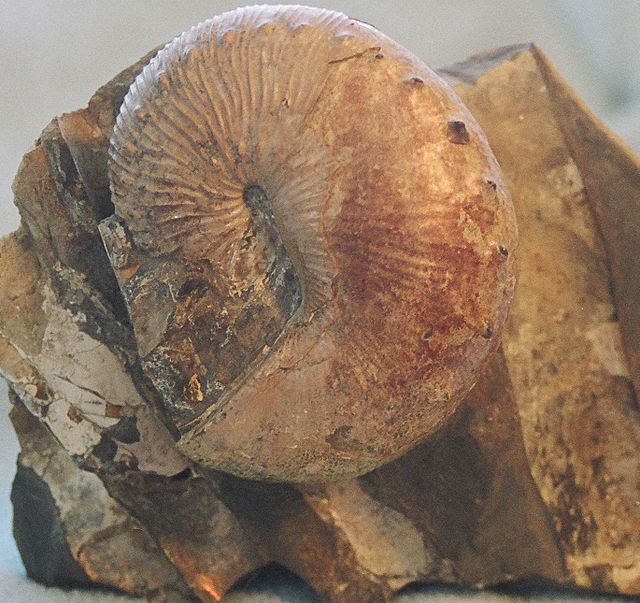Baculites is an extinct genus of heteromorph ammonite cephalopods with almost straight shells. The genus, which lived worldwide throughout most of the Late Cretaceous, and which briefly survived the K-Pg mass extinction event, was named by Lamarck in 1799.
Baculites
A fossil cast of the shell of a Baculites grandis on display at the North American Museum of Ancient Life in Lehi, Utah.
Baculites specimen in the field; western South Dakota, Pierre Shale, Late Cretaceous. Part of the phragmocone (left) and part of the body chamber (right) are present.
Baculites showing sutures and remnant aragonite; western South Dakota, Late Cretaceous.
The term Paleocene ammonites describes families or genera of Ammonoidea that may have survived the Cretaceous–Paleogene extinction event, which occurred 66.043 million years ago. Although almost all evidence indicated that ammonites did not survive past the K–Pg boundary, there is some scattered evidence that some ammonites lived for a short period of time during the Paleocene epoch, although none survived the Danian ; they were likely extinct within 500,000 years of the K-Pg extinction event, which correlates to roughly 65.5 Ma. The evidence for Paleocene ammonoids is rare and remains controversial.
A fossil of Hoploscaphites, an ammonite believed to have survived the K-Pg extinction event well into the Paleocene





